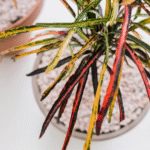Silver squill, also known by its scientific name Ledebouria socialis, is a unique and beautiful houseplant. It has silver-green leaves with purple spots that make it look special. The plant also grows from small bulbs, which gives it a special charm. Native to South Africa, silver squill is a strong and low-maintenance plant. Even if you are new to gardening or forget to water sometimes, this plant can still do well. In this article, you’ll learn how to grow and care for silver squill in simple steps.
Choosing the Right Spot
Silver squill grows best in bright, indirect light. Place it near a sunny window where it can get lots of light, but not direct sun all day long. Direct sun can burn the leaves and fade the color. If you don’t have a bright window, silver squill can also grow under indoor lights. It’s a great plant for office desks or shelves where it can enjoy soft light.
The Best Soil for Silver Squill
The soil you use should drain well. Silver squill bulbs can rot if the soil stays wet for too long. A cactus or succulent soil mix works perfectly. You can also make your own mix by adding sand or perlite to regular potting soil. This keeps water from sitting in the pot and hurting the roots or bulbs.
Planting Silver Squill
When planting silver squill, don’t bury the whole bulb. Let the top part of the bulb stay above the soil. This helps the plant stay dry and healthy. You can plant a few bulbs in one pot to make it look fuller. The plant grows in small clumps, so it looks best when there are a few together. Use a small pot with holes at the bottom for drainage.
Watering Needs
Silver squill does not need a lot of water. In fact, too much water can harm it. Let the soil dry out completely before watering again. In spring and summer, you may need to water once every one or two weeks. In winter, when the plant is not growing much, water even less. Always check the soil first—if it’s dry, then it’s time to water.
Temperature and Humidity
Silver squill likes warm air. The best temperature range is between 60°F and 80°F (15°C to 27°C). Keep it away from cold windows, fans, or heaters. It doesn’t like cold drafts. This plant can handle low humidity, so it’s perfect for homes with dry air. You don’t need to mist it or use a humidifier.
Feeding Your Plant
You can feed silver squill with a gentle liquid fertilizer during the growing season, which is spring and summer. Use a balanced houseplant fertilizer once a month, but make sure to mix it with extra water to make it weaker. Too much fertilizer can harm the plant. Don’t fertilize in the fall and winter, as the plant rests during this time.
When and How to Repot
Silver squill doesn’t need to be repotted often. It actually likes being a little tight in its pot. Repot the plant every 2 or 3 years, or when it gets too crowded. When repotting, choose a pot that is just a little bigger than the old one. Always use fresh soil, and remember to plant the bulbs with their tops above the soil.
Propagation: Growing New Plants
Silver squill is easy to multiply. When the plant grows, it produces small baby bulbs, called offsets, around the main bulb. You can gently pull these baby bulbs off and plant them in new pots. Make sure each new bulb has the top sticking out of the soil. Water lightly and give them the same care as the main plant. After a few weeks, the new plants will start growing.
Common Pests and Problems
Silver squill is usually free from pests, but sometimes bugs like mealybugs, spider mites, or scale can appear. These bugs are tiny and can hide on the leaves. If you see any, wipe the leaves gently with a damp cloth. You can also spray the plant with insecticidal soap. Keep your plant clean and check it once in a while.
The most common problem is overwatering. This can cause the bulbs to rot and the leaves to turn soft or yellow. Always let the soil dry out completely before watering again. If your plant starts looking weak or soft, check the soil and adjust your watering.
How to Keep Silver Squill Happy
Here are some simple tips to keep your silver squill looking great:
- Give it bright, indirect light.
- Use well-draining soil.
- Let the soil dry before watering.
- Keep it in a warm room.
- Fertilize only during the growing season.
- Don’t bury the bulbs too deep.
- Check for pests now and then.
With these easy steps, your silver squill can grow happily for many years.
Is Silver Squill Safe Around Pets?
Silver squill contains chemicals that may be harmful to pets if eaten. If you have cats or dogs that like to chew on plants, it’s best to keep silver squill out of reach. Place it on a high shelf or hang it in a pot. If your pet eats part of the plant and starts acting strangely, call your vet.
Does Silver Squill Bloom?
Yes, silver squill can bloom. It produces small flowers, usually in the spring or early summer. The flowers are tiny and grow on long stems. They are usually light purple or pink and add a nice touch to the plant. While the flowers are not very big or showy, they are a sign that your plant is happy and healthy.
Final Thoughts
Silver squill is a great houseplant for anyone who wants something different but easy to grow. Its spotted silver leaves, tough nature, and low care needs make it a favorite for plant lovers. Whether you keep it in your kitchen, living room, or office, it will add a touch of beauty to any space. Just remember not to overwater it, give it some sunlight, and enjoy watching it grow.
With just a little care, silver squill can become one of your favorite plants. It’s simple, tough, and beautiful—all the things that make a plant perfect for your home.







Leave a Reply